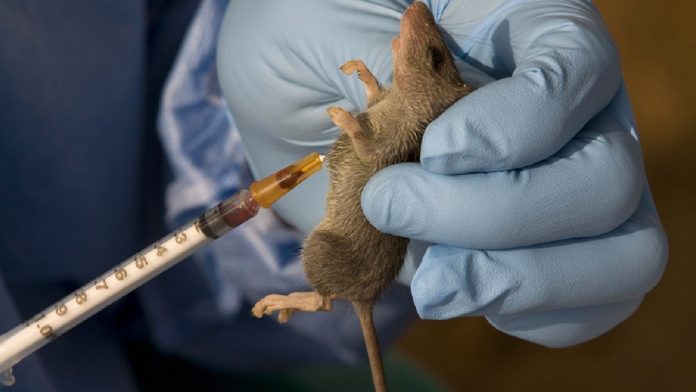Overview
Lassa fever is an acute, viral disease that is widespread in West Africa, borne by a type of rodent. It can be potentially life-threatening. It is a hemorrhagic virus, which means that it can cause bleeding, but there are no signs for 8 out of every 10 people with the virus. It can be lethal if it affects the liver, kidneys or spleen.
Fast facts about Lassa fever
- Around 5,000 deaths per annum are caused by Lassa fever.
- It is distributed by the multimammate rat’s feces and urine (Mastomys natalensis).
- In Sierra Leone, Liberia, Guinea, and Nigeria, it is most commonly found.
- Symptoms include lung, respiratory, and neurological disorders and are varying.
Lassa fever is a poorly understood disease that is difficult to diagnose and treat, despite affecting up to 300,000 individuals a year across West Africa, and causing more than 5,000 deaths annually.
In the village of Lassa, in Nigeria, this year marks 50 years since the discovery of the virus causing Lassa fever. It is a type of haemorrhagic viral fever that is endemic in the countries of Nigeria, Sierra Leone, Guinea, Liberia and Benin in West Africa.
“It has been half a century since the discovery of Lassa fever in northern Nigeria, but health workers in West Africa still urgently need adequate equipment and training to manage patients of all ages affected by the disease safely,” said Dr Hilde De Clerck, speaking at the first ever international conference on Lassa fever, held in Abuja, Nigeria, on 16 and 17 January.
In order to save more lives in the future, research into improved tools for timely diagnosis and treatment is also important,” added Dr. De Clerck, who presented the experience of MSF in the management of Lassa fever at a pediatric reference center in Godoma (Bo), Sierra Leone.”
What is Lassa fever and why is it so hard to diagnose and treat?
Lassa fever is a viral haemorrhagic fever that spreads to humans through contact with infected rats.
“One of the major challenges of treating Lassa fever is the nature of the disease itself because at the onset, it mimics diseases like malaria,” says Dr Umezurike Daniel, the health commissioner of Nigeria’s Ebonyi state.
Only a few laboratories in the world can diagnose the virus—which often leads to delays in starting treatment.
“A lot of time is wasted before the patient actually presents for treatment, and the prognosis gets very bad if treatment is not commenced within six days from the onset of symptoms,” Dr Umezurike explains.
Managing Lassa fever also requires appropriate use of personal protective equipment and other infection prevention and control measures, to protect healthcare workers and relatives of patients.
Nigeria experienced its largest outbreak on record in 2018
In March 2018, MSF teams joined the response to one of Nigeria’s largest ever Lassa fever outbreaks.
Twenty-three states in Nigeria reported 3,498 Lassa fever suspects during 2018, with 45 healthcare workers among the 633 confirmed cases.
Causes
Once a Mastomys rat is infected with the virus, it can excrete the virus in its feces and urine, potentially for the rest of its life.
As a result, the virus can spread easily, especially as the rats breed rapidly and can inhabit human homes.
The most common method of transmission is by consuming or inhaling rat urine or feces. It can also be spread through cuts and open sores.
The rats live in and around human habitation, and they often come into contact with foodstuffs. Sometimes people eat the rats, and the disease can be spread during their preparation.
Person-to-person contact is possible via blood, tissue, secretions or excretions, but not through touch. Sharing needles may spread the virus, and there are some reports of sexual transmission.
Lassa fever can also be passed between patients and staff at poorly equipped hospitals where sterilization and protective clothing is not standard.
Lasa Fever Symptoms
After infection occurs, signs normally manifest within 6 to 21 days.
While there may be a general malaise, headache, and a mild fever, an estimated 80% of infections do not show essential symptoms.
Lassa fever becomes severe in the remaining 20 percent of instances.
Symptoms can include:
- bleeding in the gums, nose, eyes, or elsewhere
- difficulty breathing
- a cough
- swollen airways
- vomiting and diarrhea, both with blood
- difficulty swallowing
- hepatitis
- swollen face
- pain in the chest, back, and abdomen
- shock
- hearing loss, which may be permanent
- abnormal heart rhythms
- high or low blood pressure
- pericarditis, a swelling of the sac that surrounds the heart
- tremors
- encephalitis
- meningitis
- seizures
Lassa fever is lethal in about 1 percent of all cases, and about 15 to 20 percent of all hospitalizations for the disease will result in death.
Death can occur due to multiple organ failure within 2 weeks after the onset of symptoms.
Hearing loss, which happens in about 1 in 3 infections, is one of the most common complications of Lassa fever.This hearing loss varies in degree and is not necessarily related to the severity of the symptoms. Deafness caused by Lassa fever can be permanent and total.
It is particularly dangerous for women in the third trimester of pregnancy. Spontaneous loss of pregnancy occurs in around 95 percent of pregnancies.
Diagnosis
The symptoms of Lassa fever vary widely, and diagnosis can be difficult.
Other viral hemorrhagic fevers, including Ebola virus, malaria, and typhoid, can clinically mimic the disease.
Laboratory-based tests for Lassa fever are the only conclusive ones, and the handling of specimens can be dangerous. These studies can only be performed by specialized institutions.
In general, Lassa fever is diagnosed by enzyme-linked serologic immunosorbent assays (ELISA). These detect antibodies to IgM and IgG, and Lassa antigens. Reverse transcription-polymerase chain reaction (RT-PCR) can also be used in the early stages of the disease.
FACEBOOK IN WAR WITH APPLE OVER DATA PRIVACY CHANGE
Prevention
The main focus of prevention is “community hygiene,” to control the rat population.
This includes:
- regular hand-washing
- storing foods in rodent-proof containers
- keeping garbage away from the home
- keeping pet cats
- avoiding blood and other bodily fluids when caring for sick relatives
- following safe burial procedures
- using protective equipment in a healthcare setting, including masks and eyewear
The Mastomys rat is so common that it can not be eradicated in a practical way. As a consequence, the main goal is to discourage and prohibit these pests from sharing human housing.
In areas where Lassa fever is a threat, the World Health Organization (WHO) and other organizations work to raise awareness.
The Period
A fever may be as follows:
Acute if it lasts longer than 7 days
If it lasts for up to 14 days, sub-acute
Persistent or chronic if it lasts longer than 14 days
Treatment
A mild fever is part of the immune system’s response to bacteria, viruses, and other pathogens. It helps the body fight off infection.
However, it can be uncomfortable, and a high fever can sometimes lead to complications.
For this reason, doctors may sometimes recommend medications called antipyretics to lower a person’s temperature.
Nonsteroidal anti-inflammatory drugs (NSAIDs), such as ibuprofen, are examples. A fever can also be decreased by acetaminophen (Tylenol). Aspirin for help, but it’s not good for kids, and it may not be good for people who take blood thinners.
It is possible to buy NSAIDs and Tylenol over the counter or online.
They can experience dehydration if a person sweats a lot. In this scenario, to avoid complications, they can drink plenty of fluids.




















i like this wonderful post
lloyds pharmacy in scotland order viagra viagra brand viking purchasing 50mg viagra
Aw, this was an incredibly good post. Taking the time and actual effort to make a top notch article… but what can I
say… I put things off a lot and don’t manage to get anything done.
my blog; CBD oil for anxiety
I think this is one of the most significant information for me.
And i am glad reading your article. But wanna remark on few general things,
The site style is great, the articles is really great : D.
Good job, cheers
Hello, Neat post. There is a problem along with your web site in web explorer, might check this?
IE still is the marketplace leader and a large section of folks will
omit your fantastic writing because of this problem.
I think this is one of the most significant information for me.
And i’m happy reading your article. But want to remark
on some common issues, The web site style is great, the articles
is really great : D. Good task, cheers
Here is my web site … CBD for dogs
I am extremely impressed with your writing skills and also with the
layout on your blog. Is this a paid theme or did you modify it yourself?
Anyway keep up the excellent quality writing, it’s rare to see a
great blog like this one nowadays.
Here is my page :: CBD gummies for pain
If you want to get a great deal from this article then you have to apply these methods to your won weblog.
delta 8 THC for sale area 52 – delta 8 THC for sale area 52
delta 8 THC for sale area 52 – delta 8 area 52
delta 8 THC for sale area 52 – delta 8 carts Area 52
delta 8 area 52 – Area 52 Delta 8 THC
delta 8 area 52 – Area 52 delta 8 carts
I relish, result in I discovered just what
I was taking a look for. You have ended my four day long hunt!
God Bless you man. Have a great day. Bye
area 52 delta 8 THC products – area 52 delta 8 THC products
area 52 delta 8 THC products – delta 8 THC area 52
delta 8 THC for sale area 52 – Area 52 delta 8 carts
delta 8 carts Area 52 – Area 52 delta 8 carts
Area 52 Delta 8 THC – delta 8 THC area 52
If you desire to take a good deal from this paragraph then you have to apply these
methods to your won webpage.
Area 52 delta 8 carts – Area 52 delta 8 carts
Area 52 delta 8 carts – delta 8 THC area 52
delta 8 THC area 52 – area 52 delta 8 THC products
delta 8 THC area 52 – delta 8 THC for sale area 52
Area 52 delta 8 carts – buy delta 8 THC area 52
Next time I read a blog, I hope that it won’t disappoint me as much as this one.
After all, Yes, it was my choice to read, but I genuinely believed you’d have something useful
to talk about. All I hear is a bunch of moaning about something
that you can fix if you weren’t too busy looking
for attention.
Can I just say what a relief to discover someone
who actually understands what they are discussing over the internet.
You definitely know how to bring a problem to light and make it important.
More and more people should check this out and understand this side of your story.
I was surprised that you’re not more popular because you certainly possess the
gift.
awesome content, i like it
Its such as you learn my thoughts! You appear to know so much approximately this, such as you wrote the guide in it or something. I feel that you simply can do with some percent to drive the message house a bit, however instead of that, that is excellent blog. A great read. I’ll certainly be back.